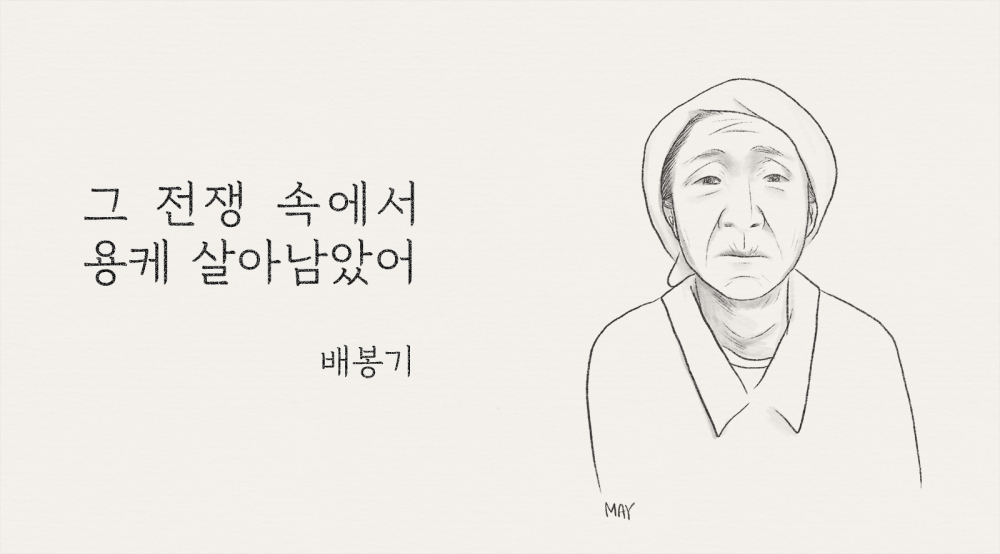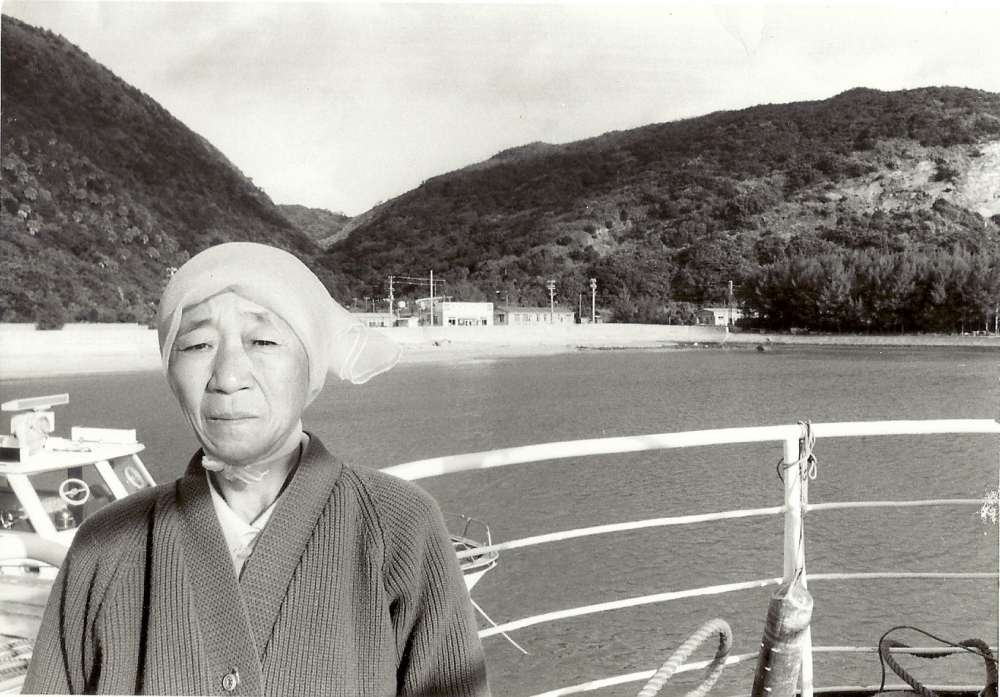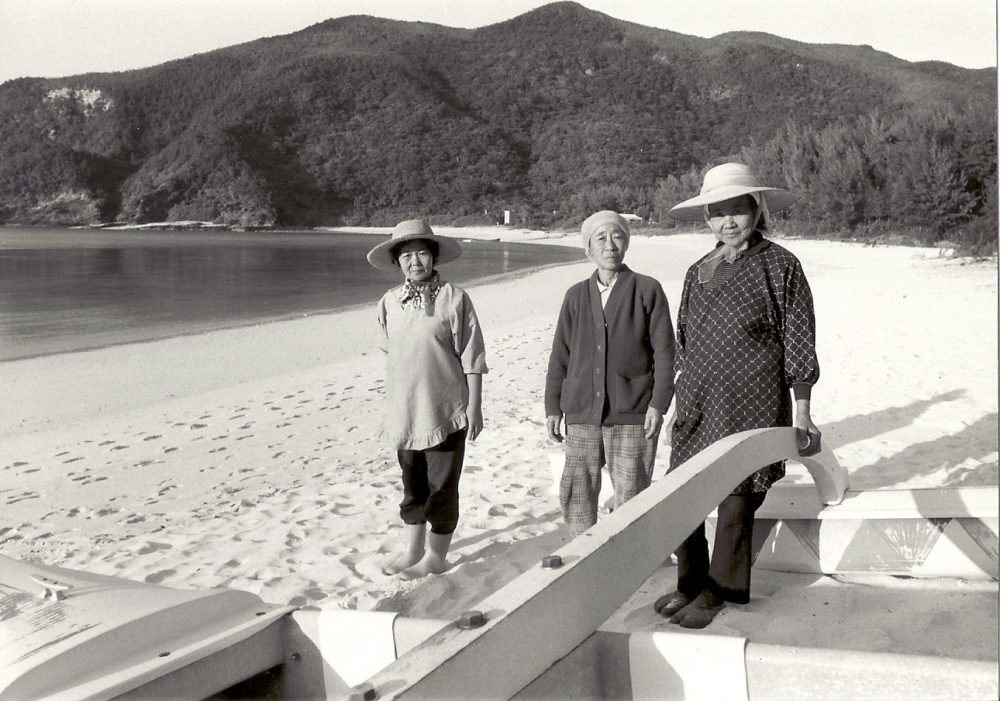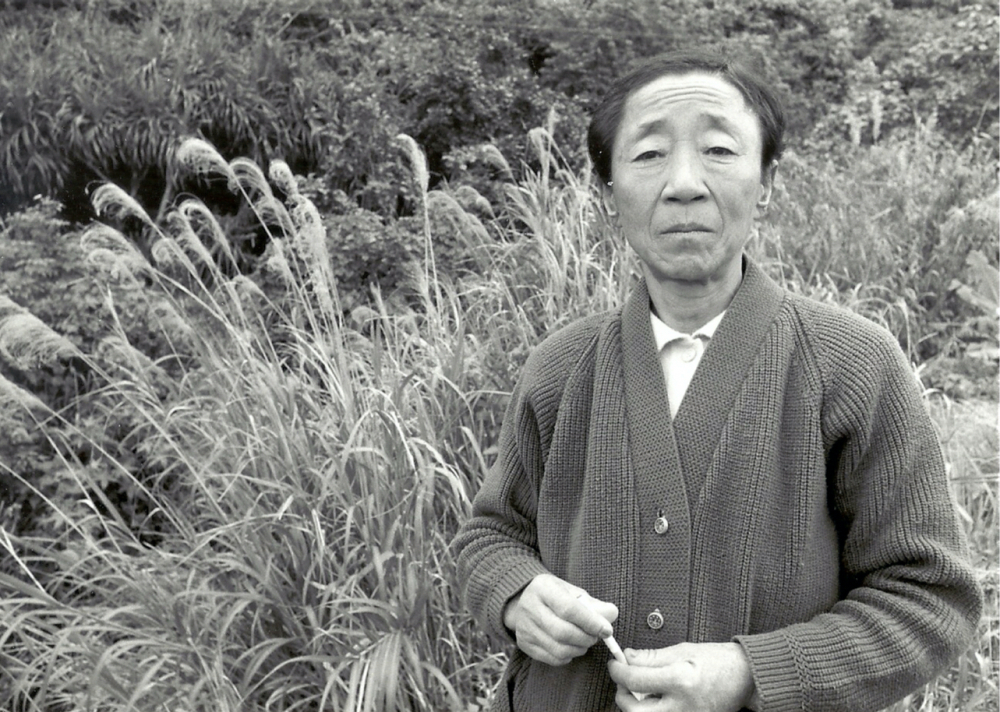I became interested in the issue of sex trading after I learned of lullaby songs about Mabiki (間引き, meaning ‘weeding out’, refers to the infanticide custom in the Edo period, where newborn babies were killed due to hardships). The below illustrates an example of a Mabiki lullaby song:
If this is a girl
Wrap her in a straw mat and tie her with a string
Throw her into a small stream you see before your eyes
Swish, splash, splash
Fish pecks at her from below
Birds pecks at her from the top
In this lullaby, the subject of Mabiki is a girl. Another lullaby features the following lyrics:
If it’s a girl, squash her
If it’s a boy, harvest him
Here, ‘squash’ is a dialect of ‘crush’, meaning murder.
In the early modern days, 80% of the Japanese population was farmers. The majority of them were tenant farmers, and they had to pay 34% of the harvested crops as land tax (地租) and an additional 34% as farm rent fees to the landowners. At that time, agriculture was not as developed as now, so the volumes of the harvested crops were modest. The tenant farmers suffered destitution throughout their lives as they could harvest only a small amount of crops, and most of the crops they harvested were paid as land taxes and rent fees. These hardships led to the custom of infanticide and lullabies about it.
Even if the newborn girls managed to avoid murder, the girls born into poor families were soon sent to other families to work as babysitters. Once they had grown a little, they were sent to work in factories or as live-in housekeepers for other families. In some cases, their parents received advanced wages to send them to work as geisha or licensed prostitutes. The Mabiki lullabies and the Edo period’s customs of selling daughters were inextricably linked.
In the fall of 1977, while I was still pursuing my interest in the sex trading issues, a friend showed me a newspaper article which displayed the following subtitle:
A Korean woman who was mobilized in Okinawa during the war
gains her ‘freedom’ for the first time in 30 years.
In consideration of her unfortunate past,
- The Ministry of Justice grants her a special residence (A post from Kyodo News, October 22, 1975)
The ‘unfortunate past’ mentioned in this article meant being mobilized in the Japanese Military "Comfort Station". This article also featured a photograph of a woman's back. My body trembled just by skimming through that news article. The state committed a crime that tremendously undermined a woman’s life. The woman in the picture was the person who suffered the damage....
It was December 1977 when I first met Bae Bong-gi, the person featured in the news article mentioned above. In February 1987, I published the book <The House with a Red Tile Roof> which followed in the footsteps of half of Bae Bong-gi's life and other Korean women mobilized for the Japanese Military "Comfort Stations" in the Kerama Islands (慶良間諸島), Okinawa. The book came out to the world about 10 years after I met Bae Bong-gi for the first time, but I did not have enough time to capture even half of Bae Bong-gi’s life. Nevertheless, as I believed I would not be able to write about everything even if I spent more time on it, I decided to publish the book anyway as if I was making an interim announcement. The book has not yet progressed since then, but whenever someone asks me what my most important work is, I still choose this book.
Tokashiki (渡嘉敷), Zamami (座間味), and Aka/Geruma (阿嘉・慶留間) islands in Okinawa were home to the Japanese Military “Comfort Stations” where seven Korean women, including Bae Bong-gi, were assigned to. Those islands were also the places that suffered U.S. military air raids, which symbolized the horrors of the Battle of Okinawa.
During World War II, the Japanese Army's signs of defeat intensified in the Battle of Okinawa, the only place in Japan that experienced the ground battle. Consequently, on June 23, 1945, Commander Ushijima and chief of staff Jo Isamu committed suicide, and the combat readiness for the Okinawa’s 32nd defense force was cleared. Since then, the Battle of Okinawa has been extensively studied by researchers and local governments in Okinawa, which walked alternative historical steps compared to other local governments when they were under the U.S. military government’s rule.
With the help of acquaintances and researchers based in Okinawa, I also listened to profuse testimonies from former Japanese military personnel and the residents who had direct contacts with Bae Bong-gi. In addition, I obtained the war diary (陣中日誌) of the 3rd combat unit that used to be stationed on Tokashiki Island along with other data to understand the war situation at the time when the four "Comfort Women" including Bae Bong-gi belonged to the cooking team of that particular combat unit.
The book <The House with a Red Tile Roof> could not document the story of Bae Bong-gi's entire life, but it compared the testimonies and data of the residents and former military personnel with Bae Bong-gi's testimony, and thoroughly described the circumstances after Bae Bong-gi’s arrival in Okinawa, especially the wartime situation.
The Japanese Army installed the Japanese Military “Comfort Stations”
immediately after landing on the Kerama Islands
It was on September 9, 1944, when the Japanese Army landed on the Kerama Islands. The 1st and 2nd battalions of the maritime base unit were stationed on Zamami Island, while the 3rd battalion was stationed on Tokashiki Island. Afterwards, the 1st-3rd maritime combat units arrived on the Kerama Islands. The base unit battalions were in charge of constructing a base and defense, while the combat units were tasked with approaching and blowing up the target vessels with the landing crafts carrying two explosives weighing 125kg. It would have been difficult for anyone to come back alive after completing the missions. The combat members who carried out those commando operations were young ‘volunteers’ who were barely 20 years old. A hundred commando ships were deployed in each combat unit.
The place designated as the Japanese Military “Comfort Station” on Tokashiki Island was a fairly new tile-roofed house that was built by the Nakandakari family and was located close to the naval port. The Nakandakari family, who were forced to vacate the house due to its conversion into the Japanese Military Comfort Station, moved to empty rooms in the fishermen's union. Since the livestock in the barn could not move with the family, Hatsuko, the eldest daughter of the Nakandakari family, went to the Japanese Military Comfort Station every morning and evening to feed the livestock. She also stopped by on the 1st and 15th of every month to burn incense at the altar where the ancestors were enshrined. Whenever she paid a visit, Hatsuko talked to the Korean women of the Japanese Military “Comfort Station” in Japanese if they could speak Japanese.
The house next to the Japanese Military “Comfort Station” was converted into a post exchange (酒保), which is equivalent to a military canteen, and Shinzato Yoshie, the lady of the house, was in charge of running the canteen. The soldiers used Shinzato's house as a waiting room before going into the Japanese Military “Comfort Station” rather than using it as the canteen. The military banned the ordinary residents of Tokashiki Island from accessing the Japanese Military “Comfort Station”.
Meanwhile, during its executive meeting, the women's youth groups in Tokashiki village decided to oppose the establishment of the Japanese Military “Comfort Station”. The main reason was that if the Japanese Military “Comfort Station” was installed on Tokashiki Island, where sex trading had never taken place before, the atmosphere would be disturbed and young women could be mistaken for "Comfort Women" by soldiers. Kohagura Yoko, head of the women's youth groups, and others visited Akamatsu Gaji, the general of the 3rd combat unit, in order to object to the establishment of the Japanese Military “Comfort Station”. Akamatsu, general of the combat unit, claimed that, "Most of the combat unit members are volunteer soldiers under the age of 20, but the Japanese Military Comfort Station is set up to be used as the base units consisting of older drafted soldiers". At that time, the Japanese Military “Comfort Station” was under the charge of the finance department which was responsible for accounting in the military, so the residents also strongly protested to Inoue Toshikazu, who was the staff sergeant at the finance department.
Suzuki Tsuneyoshi, general of the 3rd battalion of the maritime base unit visited Kohagura Yoko, who worked at the village office, and explained the reason for the establishment of the Japanese Military “Comfort Station”. He claimed that the Japanese Army was setting up the Japanese Military “Comfort Station” in major army posts and that protecting the bodies of local women from soldiers was one of the aims for establishing the Japanese Military “Comfort Station”. Upon hearing this, Kohagura Yoko ended up no longer campaigning against the establishment of the Japanese Military “Comfort Station”.
Seven Korean women assigned to the Japanese Military “Comfort Station” on Tokashiki Island were given Japanese names used by prostitutes and female entertainers. Bae Bong-gi, who at the age of 30 was the oldest at the time, was called Akiko; the second oldest was a 24 year old woman called Kikumaru; Haruko and Kazuko were 23 years old; Suzuran was 20 years old; and the youngest women were Aiko and Mitchan who were 16 years old.
Yoshie, who was managing the post exchange, is said to have spotted Aiko and Mitchan, whose eyes were swollen red from crying, several times around when the Japanese Military “Comfort Station” was launched.
The Nakandakari family's house, which originally had four rooms, was converted into a six-room Japanese Military “Comfort Station”, and part of the barn was also converted to be utilized as the Japanese Military “Comfort Station”. When Hatsuko came to feed the livestock, Kikumaru, who was assigned a room next to the barn, complained all day, saying that, "The mountain goats cry so loudly". Also, Kikumaru once surprised people when she mentioned, in her characteristic husky voice, that before coming to Japan, she used to serve dozens of Japanese soldiers each day in China.
A huge influx of soldiers visited the Japanese Military "Comfort Station" on holiday after the completion of the urgent construction of the commando base unit. As soon as the soldiers entered the rooms, they released their gaiters. Then, Bae Bong-gi immediately wrapped them again so that the soldiers could put the gaiters on quickly before leaving the room. That was because whenever the soldiers delayed their exit from the room, the next soldier in line hit the wall and urged them to leave quickly.
In mid-February 1945, the 1st-3rd battalions of the maritime base unit in the Kerama Islands were reorganized into independent battalions, and consequently, part of the base units remained while all the rest moved to the main island of Okinawa. Instead, drafted Korean soldiers came to Tokashiki Island. The Japanese Military “Comfort Station” became quiet afterwards.
The attack began in the morning of March 23, 1945
On the morning of March 23, 1945, the air raid alarm went off. Haruko urged, "Sisters, we must avoid the strike, quickly!" but no one responded. At that time, Haruko was living in the Japanese Military “Comfort Station” in Tokashiki while her mother was looking after her four-year-old child.
“We were all eating. Suddenly, a U.S. military plane, which looked as big as a house, appeared over the mountain across the river and covered the top of the Japanese Military Comfort Station. I heard a roar that was loud enough to almost tear my eardrums. I (Bae Bong-gi) rushed to the bathroom with Kikumaru, Suzuran, and Kazuko. Haruko, Aiko, and Mitchan escaped to the kitchen. I was crouching in the bathroom, when black smoke and dust filled up every corner, so I could not see anything ahead, and things fell down as the ceiling creaked. It seemed that the Japanese Military Comfort Station building could collapse at any moment. Kikumaru left the bathroom. I also followed Kikumaru and even tripped over the threshold of the entrance while doing so. We ran frantically towards the foot of the river and hid in the thorny Pandanus bushes (Pandanus boninensis, a tropical plant native to the Ogasawara Islands in Japan). Countless U.S. military planes were circling above the sky while the ground continued to shake. Bullets poured down like torrential rain slashing through the air. I thought ‘We might get hit this time. We might really get hit this time’. My body kept flinching with fear.
When the U.S. military aircraft moved away from the Japanese Military Comfort Station, we fled to the air raid shelter across the river. As I crossed the river, I heard a cry, "Take us with you!" When I looked back, I saw Mitchan and Aiko in front of the Japanese Military Comfort Station. Their thighs were covered in blood. I could not afford to take the two injured people with me, as my hands and feet were trembling with fear that shook my entire body. I assumed that Haruko might have died in the kitchen because I could not see her at that time.
Taking advantage of a momentary tempering of the air raids, General Suzuki, who came to the Kerama Islands to execute his superiors' operational instructions on the main island of Okinawa, ran to the Japanese Military Comfort Station with an orderly. Haruko, who was gravely injured, was the only person left at the Japanese Military Comfort Station. The U.S. military aircraft continued to attack like sea waves. When the orderly tried to cross the river by carrying seriously injured Haruko on his back, Haruko was shot by a machine gun and died instantly. Only the orderly carrying Haruko on his back managed to barely survive.”
That night, Bae Bong-gi and others in her group arrived at a primary school building which was repurposed as an emergency infirmary. There, they reunited with Mitchan and Aiko again. Mitchan and Aiko cried in pain as their thighs were wounded. Then, General Suzuki, who was next to them, became angry and yelled, "Stop crying. There are people who died”.
Bae Bong-gi continued:
"That was because Haruko was General Suzuki’s woman."
After the U.S. military air raid, Akamatsu, general of the 3rd combat unit, relied on the map only and decided to build a stronghold for the final resistance, or military dugout (複郭陣地), on Heights 234, the deepest mountain valley in Tokashiki Island. To build the stronghold, they began to move from the stronghold near the Kerama strait to Heights 234 at 2 a.m. on March 27. It rained so much that night. When the constable from the police station asked what to do about the residents, General Akamatsu ordered him to evacuate the residents to the valley behind the military dugouts which were scheduled to be built. The residents, who dug air raid shelters and built cabins near the Onna river to avoid the air raid, headed to Heights 234 by walking in the heavy rainfall.
The next day on March 28, 330 residents committed suicide in the valley opposite to the mountain peak from where the construction of the military dugout stronghold began. One family committed suicide by surrounding the grenade they received from the member of defense; some cut their throats with sickles; and others broke off thick branches and beat their families to death. Many victims belonged to families that included men. Hatsuko's parents and her younger sister were also killed in the valley. Mortars fell on the valley amid the pandemonium and Hatsuko, who was seriously injured, was rescued after staying buried in the dirt for several days.
Tokashiki village recorded the nation's highest conscription rate for three years because the residents had good physiques as many of them worked in the fishing industry. Until the barracks were built, the military personnel stayed at primary schools or private houses. Japanese soldiers and the soldiers who returned from China vividly told the residents about the various atrocities committed by the Japanese Army in China, such as how they killed men with tanks, strangled women after they raped the women, etc. The U.S. military, which landed on Tokashiki Island on March 27, was already approaching Heights A which was close to Heights 234. Heights A was located near the valley where the residents were staying after being evacuated. Upon hearing the news, Hatsuko envied those who passed away first. ‘I would rather die than defile my body to the U.S. soldiers’ - Hatsuko later said that such an idea crossed her mind. The tragedy of ‘collective suicide’ continued to take place in Zamami, Geruma, and other parts of Okinawa. Among them, Tokashiki recorded the highest death toll.
When I went to Tokashiki and told Bae Bong-gi that Hatsuko and Yoshie wanted to meet her, Bae Bong-gi gladly replied, "I should go and meet them, then".
"We luckily managed to survive amid that war".
Hatsuko and Yoshie, who reunited for the first time in about 30 years, held Bae Bong-gi's hand and said in trembling voices filled with overwhelming emotions, "You were so lucky to have survived the war”. However, Bae Bong-gi seemed a little hesitant towards the warm welcome shown by the two. It was because while Hatsuko and Yoshie had treated the seven Korean women with complex feelings and remembered their images, Bae Bong-gi, who barely spoke Japanese or Okinawan dialect, had little special memories about the two.
Hatsuko said that after the war, she asked the shaman to protect her against evils since she thought that the rooms used as the Japanese Military Comfort Station contained bad luck. Either because she heard the story, or because there was the shrine in the yard, Bae Bong-gi put her hands together for a prayer as she stood in front of the shrine.
Life at Heights 234 after the air raid
The U.S. military plane, which was orbiting over Kerama, disappeared out of the blue on March 24, 1945. On that evening, Bae Bong-gi went to check on the situation of the Japanese Military “Comfort Station” although people around her tried to stop her from doing so due to the danger. Smoke was still coming from the completely burned Japanese Military “Comfort Station”. And near the burnt house next door, there was Haruko's body covered with the remains of the fire. A few days later, adjutant Jinen Choboku of the 3rd combat unit and the sergeant who used to adore Haruko came down from Heights 234 and buried the decomposed body of Haruko where the body was found.
Yoshie explained to Bae Bong-gi that the bones buried in the yard were stored in the urns so that families and relatives could recognize them during visits, and then they were enshrined together when the Shiratama Memorial Tower was built to honor the spirits of the dead and fallen soldiers of Tokashiki village.
"Thank you for going through such trouble".
Bae Bong-gi expressed her appreciation when she returned to her accommodation, but added that, "No one will come to see them, though". That was because the destinations of the 61 women, who were drafted from Korea and left Busan along with Bae Bong-gi, were never passed on to their families.
When the U.S. military attacked the Kerama Islands, Bae Bong-gi and others in her group used a single blanket provided from the military to endure heavy rainfall and bullets that poured down like torrential rain. In late March, when the air raids subsided, the group found a cabin in the deserted corner of the village. It was a shelter built by the villagers in preparation for the air raids. When the remaining food in the cabin ran out, Kaneko, who was in charge of settling fares at the Japanese Military “Comfort Station”, headed to Heights 234, saying she would discuss it with the military. Bae Bong-gi, along with Kikumaru, Kazuko, and Suzuran followed Kaneko to head to Heights 234. Then, they began to work in the cooking team for the 3rd combat unit.
Toyama Majun, then the chief of the government office soldiers, also joined the group, so a total of five people headed to the valley of Heights 234. Toyama pointed to the cooking space of the 3rd combat unit. The place trapped about 1m of valley water, and the width and mound of the valley looked wide. The clear valley water was blue only at that spot, indicating that the spot was quite deep. Next to the mound, there was a cooking furnace made of clay. There, Bae Bong-gi and others in her group cooked every day the watery porridge that barely had any solid ingredients. This was because the 3rd combat unit's food storage was burned on the first day of the Kerama air raid, leaving only two months’ supply out of the six months’ food supply originally stocked. Next to the cooking space, there was a path for wild animals to pass from the valley to the mountain. The only strategy of the 3rd combat unit, which had light weapons only, was to attack the U.S. military by taking advantage of darkness. When attacking, the soldiers used the path next to the cooking space where the wild animals roamed. Bae Bong-gi often witnessed the soldiers returning with horrific wounds that they picked up during the attack. There were also many soldiers who did not make it back.
When we visited Heights 234 again, Bae Bong-gi crouched near the path where the wild animals used to pass at the time, closed her eyes, and prayed for a long time with her hands put together. In the context of the large framework of historical harm and damage, Bae Bong-gi came to Tokashiki by accepting the damage of the Japanese colonial period which was extremely harsh at the time. She even went back to Heights 234 to mourn the death of the Japanese soldiers, who were the perpetrators, and prayed for them to rest in peace.
Hatsuko's footsteps naturally headed to the valley in Tokashiki where 330 people committed ‘collective suicide’. Hatsuko whispered:
"The spirit of the dead can go to heaven only after the final incense burning is over, but those who died here are said to be wandering aimlessly without rising to heaven."
Hunger was more painful than the fear of death
Bae Bong-gi and others in her group, who entered the cooking team of the 3rd combat unit, was able to eat the thick part of the porridge left on the bottom of the pot after distributing the food to each unit.
"But being hungry is more painful than getting shot."
Bae Bong-gi, who was recalling the past, said with a grimace.
Bae Bong-gi came close to death several times in Tokashiki. One day, Akamatsu, general of the combat unit, wanted to take a bath, so the drafted soldiers filled the drum with water from the valley and Bae Bong-gi set the fire. Suddenly, there was the sound of an explosion, and bullets from machine guns penetrated the tent, drilled holes in the drum, and hot water splashed out.
"Hurry up, run!"
Staff sergeant Inoue shouted.
"I could not escape. I could not even move because my legs became weak."
On one occasion, she even saw a large tree in front of her crack after getting hit by a bomb, and on another occasion, she saw fragments of mortar flying just behind her back. Bae Bong-gi repeatedly avoided death through pure luck during the air raids in Kerama and also her stay at Heights 234. However, hunger was more unbearable than the fear of death, Bae Bong-gi remarked. The war diary documented by the 3rd combat unit showed a series of records mentioning the soldiers who died from malnutrition after July 1945. The number of soldiers who perished from malnutrition until Japan’s defeat reached 12, which was more than those who got killed on the battlefield or due to diseases.
Perhaps due to this excruciating hunger, at the end of June 1945, a private first class called Sone Kiyoshi took about 20 Korean drafted soldiers with him and surrendered to the U.S. military. Two “Comfort Women” also joined them at the time. Bae Bong-gi recounted that she could not find Kikumaru and Suzuran when she opened her eyes in the morning on the day that Private first class Sone surrendered to the U.S. military.
Private first class Sone was convinced that Japan would lose the war. Whenever a commando plane flying over Kerama was shot down by a U.S. military attack, he used to say depressingly, "Ah, young men suffered futile deaths today again". He decided to surrender to the U.S. military because he wanted to avoid dying in vain. He did not mean to survive alone. However, due to the risk of whistleblowing, it was dangerous to ask the Japanese Army to surrender together with him. Just before surrendering, he spoke to the chief of Korean drafted soldiers. After a brief consideration, the drafted soldiers who decided to surrender joined Private first class Sone. At that time, Kikumaru and Suzuran were sleeping in the same trench as them. The voice of the chief of the drafted soldiers did not reach the trench where Bae Bong-gi and Kazuko were sleeping in.
After leaving the camp, she wandered around Okinawa
Bae Bong-gi and Kazuko, who continued to stay in the 3rd combat unit, participated in the disarming ceremony between the U.S. military and the 3rd combat unit held at the village's primary school campus on August 26, 1945. Afterwards, Bae Bong-gi and Kazuko were admitted to a prison camp on the main island of Okinawa along with the 3rd combat unit, and were then immediately transferred to a civilian camp in Ishikawa on the main island of Okinawa. She could not remember how long she stayed inside the camp in Ishikawa. Matsuyama, a Korean who stayed in Okinawa before the war and served as the U.S. military's task leader, hung around Kazuko, and eventually Kazuko left the camp before Bae Bong-gi did. Bae Bong-gi left the camp when the camp became quiet as Okinawa residents started to stay in the planned housing built by the U.S. military, or homes haphazardly built with the pieces of boards, tents, etc. collected from various places.
"At first, I felt uncomfortable wherever I went. I spent one night here, three nights there, at most a week at one place. If I told people, "Let me do some kitchen work for you", they replied, ‘There is no need for help in the kitchen. Just entertain the customers’, because I was still young. As I used to walk all day, I dozed off and even had dreams while customers were drinking. Then, when I woke up in the morning, I felt like leaving again, so I lied that I would go home to change my clothes, and just left instead. As I walked all day, I realized I had nowhere to sleep when it became dark outside, so I had no choice but to go back to the bars. At that time, I was wearing work shoes used as the Japanese Army’s work shoes. I held those in my hands and walked barefoot intentionally. I did not know anyone in a strange country, I did not how to communicate, and I had no money. I felt like giving up. I was a human but I was living like that."
Bae Bong-gi said she walked continuously for a year with only one package of a few clothes on her head. While I was listening to Bae Bong-gi's story, I questioned her if it would have been better to stay in the same place than to go back to the bar again after dark. She responded with an irritated voice:
“That was because I was nervous. I was nervous!”
The place where Bae Bong-gi wandered aimlessly for a year covered from the central region to the south of Okinawa, which suffered the greatest damage from the war and turned into ashes during the Battle of Okinawa.
I wonder if people can live without anything when they cannot communicate in a foreign country, have no acquaintances, and have no money. Bae Bong-gi’s story about how she wandered around the vast land of Okinawa barefoot for as long as a year illustrated the most agonizing extreme experience she went through among the several other drastic situations she had to endure. Nonetheless, Bae Bong-gi survived.
And Bae Bong-gi thought, "Oh, damn! What kind of place is Nago? I should go to Nago” and prepared to leave again. Afterwards, Bae Bong-gi wandered for years in Nago, Koja (currently Okinawa City), Akena, and then Kadena, etc., before finally settling in Nanjo. I met Bae Bong-gi for the first time in December 1977 when she was settled in Nanjo. This beginning of my meeting with Bae Bong-gi became an important precursor for listening to and recording the voices of the Japanese Military "Comfort Women" victims.
Related contents
-
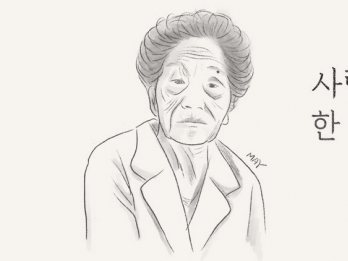
- The story of Song Shin-do – “We have not the slightest idea of what a person thinks inside.”
-
This article is about the story of Song Shin-do remembered by Kawata Fumiko, who connected Song Shin-do to the ‘”Comfort Women” 110 Report Call Executive Committee’.
-
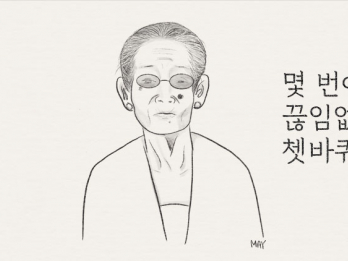
- 인도네시아에서 일본군이 일으킨 성폭력(1) - 마르디옘, 스하나 씨 이야기
-
제가 지금까지 살면서 죽고 싶을 만큼 창피한 적이 두 번 있습니다. 첫 번째는 위안소에서 처음으로 일본군에게 능욕을 당했을 때고, 두 번째는 위안소에서 있었던 치욕스러운 과거를 당신에게 이야기한 오늘입니다.
-
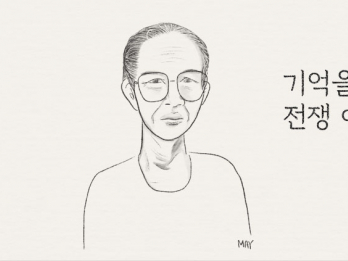
- 인도네시아에서 일본군이 일으킨 성폭력(2) - 위다닌시, 드리스 씨 이야기
-
이 글은 『인도네시아의 ‘위안부’』(아카시 서점, 1997)를 쓴 가와타 후미코가 만난 인도네시아의 일본군'위안부' 피해자들, 그 중에서도 위다닌시 씨와 드리스 씨의 이야기이다.
-

- 일본인 ‘위안부’ 다마코 씨 이야기 (1)
-
그동안 배봉기 씨를 만나러 오키나와에 갈 때마다 다마코 씨도 찾아갔었다. 다마코 씨에게는 왠지 모를 친근감을 느꼈다. 같은 일본인이라고 의식해서일까. 아니면 나보다35살 위였지만 다마코 씨의 타고난 성격이 사랑스러웠기 때문일까.
-
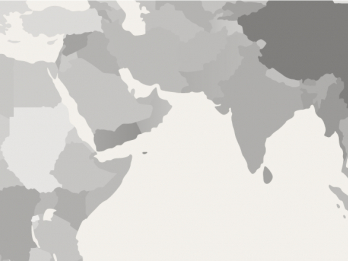
- 일본인 ‘위안부’ 다마코 씨 이야기 (2)
-
공습이 시작되었을 때 다마코 씨는 하녀인 기누코, 어린 게이샤와 함께 메이세이루를 뛰쳐나왔다. 하지만 어디로 도망가야 할지 몰랐다. 다마코 씨는 망설임 끝에 일행과 떨어져 혼자서 산속으로 도망쳐 헤맸다. 섬을 쪼갤듯이 작렬하는 포탄 소리와 귓가를 스치는 총탄 소리에 덜덜 떨며 우왕좌왕했고 문득 정신을 차렸을 때는 천연 수로 안에 있었다.
-
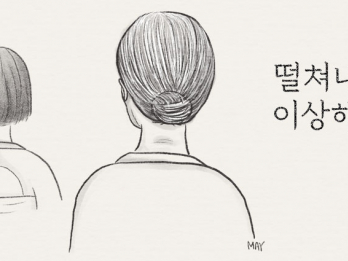
- 일본인 ‘위안부’ 다미 씨 이야기
-
“언론에는 한국 사람 얘기만 나오던데, 국내에도 위안소가 있었다는 사실을 아실까 해서요.” 도쿄에 거주하는 당사자 다미(가명) 씨가 '위안부 110번'으로 제보를 해왔다.
- Writer Kawata Fumiko (川田文子)
-
Kawata Fumiko (川田文子) was born in 1943 in Ibaraki Prefecture, Japan. She started her career as a writer in 1977 after graduating from the Department of Literature at Waseda University in 1966. In late 1977, she met Bae Bong-gi, the first witness to illustrate the damages suffered by the Japanese Military "Comfort Women". Her most important work is 『The House with a Red Tile Roof - The Story of Korean Women Who Became the Japanese Military "Comfort Women" (赤瓦の家―朝鮮から来た従軍慰安婦) 』 which is a book based on the interviews of Bae Bong-gi to follow in the footsteps of the Korean women who were taken to the Japanese Military Comfort Stations in the Kerama Islands (慶良間諸島), Okinawa (沖縄). She is also the author of 『The Women of Yesterday (つい昨日の女たち)』, 『Ryukyuko's Women (琉球弧の女たち)』, 『Women of the Imperial Forces’ Japanese Military Comfort Station (皇軍慰安所の女たち)』, 『War and Sex (戦争と性)』, 『”Comfort Women” in Indonesia (インドネシアの「慰安婦」)』, 『Girls Called “Comfort Women” in the Battlefield (イアンフとよばれた戦場の少女)』, 『Grandmother's Song (ハルモニのうた)』 and so on.
